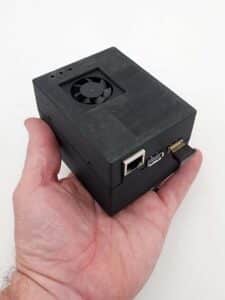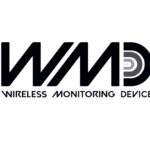Wireless Monitoring Device


Wireless Monitoring Device
The WMD is a self-contained device capable of detecting and identifying on-line devices of all kinds. It is a passive collection device, using proprietary hardware and software to perform the detection and report online systems in real time to a central data repository and web-based activity viewer.
The information transmitted by the WMD is analyzed by the Election Crime Bureau Cyber Unit. The Cyber Unit will be able to filter the incoming data to isolate election equipment that is connected to the internet. This information will be displayed at ElectionNexus.com.
- Detects all online systems up to 200 feet of the device location.
- Records IP addresses, device identification, and signal strength for all detected online systems.
- Records the public access name (SSID) of all wireless access points.
- Records the number of devices connected to each access point and the change over time.
- Records time and date of when devices go online and offline.
- Saves all connection data to a secure server for later analysis.
- Does not have the capability to interfere with any network functionality.
- Does not have the capability to view or record, inspect, alter, or destroy any actual data being transmitted or received.
- Does not have the capability to view or record, save, or publish any login credentials or security information.
How to Use
Step 1: Research
Before seeking to deploy a WMD, it is important to conduct research on the following topics:
- Local Officials
- Ask local election officials if the voting systems feature any external network connections
- Ask them if they have contracts with cellular service providers for election systems
- Ask them if their systems are "air-gapped" and, if so, ask them to provide evidence in support of that assertion
- Voting System Configurations
- Obtain copies of state and local government contracts with voting system vendors
- Review contract specifications to discern any evidence of wireless network connections
- Wireless Monitoring Laws
- Perform due diligence on state laws pertaining to wireless monitoring of elections
- Perform due diligence on local ordinances pertaining to wireless monitoring of elections
If local election officials can provide credible evidence in support of their assertions that the election systems are not connected to the internet, WMD deployment would not likely be fruitful.
If there are no indications that the machines are designed to connect to the internet, WMD deployment would not likely be fruitful.
If there are statutory prohibitions against wireless monitoring of election systems, WMD deployment is not recommended.
If none of the above circumstances apply, WMD deployment is an option.
Step 2: Request a Device
Upon successful completion of Step 1, you would be a candidate for WMD deployment.
Request a DeviceStep 3: Vet Requests
Background Check
Conduct thorough background checks to identify any criminal history, focusing on cybercrimes or election-related offenses.
Compliance with Election Laws
Ensure the entity has researched and complies with local, state, and federal election laws and regulations, including those related to cybersecurity and data protection.
Code of Ethics
The entity should adhere to a professional code of ethics, emphasizing confidentiality, integrity, and impartiality in their operations. Under no circumstances is the entity allowed to disassemble or inspect the WMD.
Conflict of Interest
Ensure there are no conflicts of interest, particularly any political affiliations or financial interests in election outcomes, that could compromise the entity's neutrality and objectivity.
References and Past Performance
Check references and review past projects to assess reliability, professionalism, and the ability to handle sensitive information appropriately.
Training
The entity should demonstrate a commitment to attend device training sessions.
Step 4: Prioritize Requests
There will be a limited number of WMD's available for distribution. As a result, there is a need to prioritize requests. The following criteria will be considered when determining the priority of individual requests.
Past Breaches
Prioritize counties with a history of cybersecurity incidents affecting election infrastructure, indicating potential vulnerabilities.
Reported Issues
Counties that have experienced issues with election integrity, such as attempts at unauthorized access or other irregularities, should be high on the list.
Current Threat Landscape
Use up-to-date threat intelligence to identify counties facing specific threats (e.g., phishing campaigns targeting election officials, ransomware threats).
Size of Voter Base
Larger counties with more voters may be prioritized due to the higher complexity of their election systems and the greater impact of any disruption.
Technology Use
Counties that rely heavily on electronic voting systems, especially those with known vulnerabilities, may require more immediate attention.
Swing Counties
Counties known to be pivotal in determining election outcomes may be targeted more aggressively by adversaries and thus should be prioritized for monitoring.
Electoral History
Counties with a history of close election results may be at higher risk of attempts to disrupt the electoral process.
Ability to Respond
Prioritize counties based on their ability to respond to and mitigate detected threats, considering both technical capacity and procedural readiness.
Compliance Needs
Counties under stricter regulatory requirements for election security may need more support to ensure compliance, making them higher priorities.
Data Protection Laws
Consider the legal landscape, prioritizing counties in jurisdictions with stringent data protection laws requiring robust security measures.
Willingness to Collaborate
Counties that have shown a willingness to work closely with state and federal authorities on enhancing election security should be considered for early deployment.
Partnership Opportunities
Identify counties where partnerships with local organizations can facilitate smoother deployment and operation of monitoring devices.
Demonstration Effect
Prioritize deployments in counties where success can serve as a model or pilot for broader implementation across other regions.
Step 7: Deployment
Once you have been trained, you are ready to deploy the WMD. In states with early voting, the deployment period will be extended beyond simply election day. There are two basic approaches to employment of the devices during elections:
- Stationary: Maintain 24/7 coverage of a single voting location
- Enables monitoring of daily connection patterns and detect communication anomalies
- Distributed: Roam from voting location to voting location
- Provides ability to determine how widespread the connectivity may be
If you are uncertain as to which approach is best for your particular region, please contact us.
Contact Us